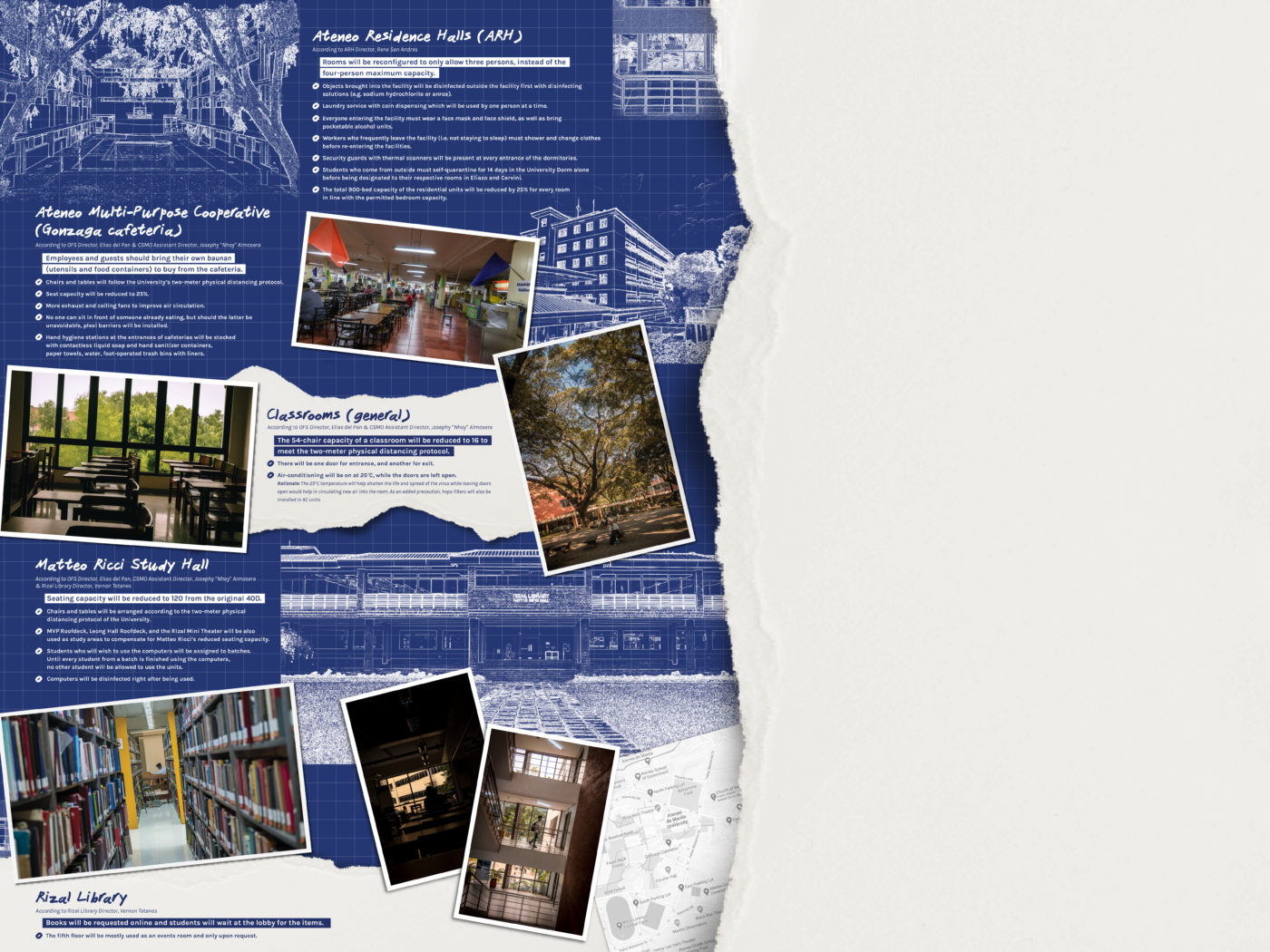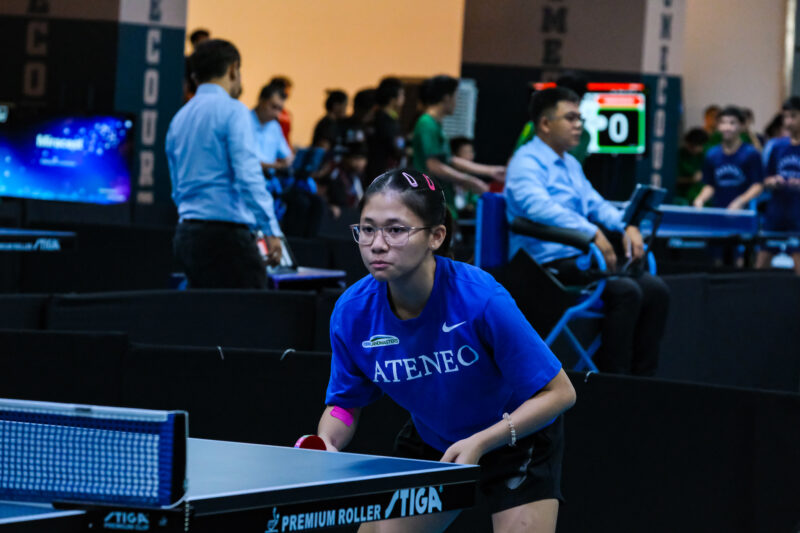AT THE onset of virtual classes, the Commission on Higher Education (CHEd) reported that a number of Higher Education Institutions (HEIs) will be “closing down for good” after recording low enrollment turnouts. The shift to online education posed several hurdles to HEIs, but the University continuously ventures to adapt to the situation.
The Ateneo has remained active these past few months on lockdown, adjusting and maintaining even its physical facilities. The University now faces a new challenge: The inevitable return of on-site classes.
Subsequent protocols
Despite the campus shutdown, employees remain at work in the Loyola Schools. According to Campus Safety and Mobility Office (CSMO) Director Marcelino Mendoza, individuals who enter the campus must fill-up an online health survey form. Upon entry, private vehicles will be disinfected, while the forms will be submitted or checked online.
As an added precaution, security guards will check the temperature of individuals entering the campus. If the temperature recorded is 37.5°C, the individual will have to wait for five minutes before being checked again. It is only when the temperature recorded is below 37.5°C that the person will be allowed to enter the campus.
These protocols form part of the new Guidelines on Workplace Prevention and Control of COVID-19, which former University President Jose Ramon Villarin, SJ signed on May 16. CSMO Assistant Director Josephy Almosera said that both the Loyola Schools Office of Health Services and the CSMO are coordinating for the campus’ reconfiguration in line with the national protocols for the COVID-19 pandemic.
Almosera says that around 400 essential employees such as security and maintenance personnel are working on campus restructuring. These employees have slowly adjusted to the new habits of the “new normal” at work, such as wearing face masks and shields. In addition, CSMO Director Marcelino Mendoza says that to reduce the workforce on campus, these employees are divided into three weekly-rotating groups: One week of work and two weeks of rest.
Changing landscapes
Ateneo Institute of Sustainability (AIS) Director Ma. Assunta Cuyekeng asserts the importance of having stringent protocols for entering the campus. Given this, facilities that used to be congested on campus are now undergoing changes to meet the demands of the “new normal.”
According to Rizal Library Director Vernon Totanes, the New and Old Rizal Libraries will be closed to students. As high-contact facilities, these spaces will be opened slowly once the risk of contracting the virus is minimized. Totanes mentions that students will be redirected to the Matteo Ricci Study Halls since these smaller areas are easier to monitor.
Besides these changes, the libraries plan to continue the digitization of specific books and chapters as per students’ and teachers’ requests. However, this will not cause the decommission of the building. Totanes states that “[we] have to be ready, [but] one reason why I would not give up the physical space, probably in the next 10 years, is the existing collection we have will probably take as long as 10 years to digitize fully.”
Since the dorms are also dense areas on campus, Ateneo Residence Halls Director Rene San Andres says that there will be a reduction and reconfiguration of the different bedrooms. “From the new bedroom plans, there will be a 25% reduction capacity, which will hit our revenues badly,” San Andres explains. Despite the probable financial losses, he stresses that the safety of the students will remain the top priority. San Andres states that in the event that students return onsite, besides reconfiguring facilities and cleaning thoroughly, there is only so much that they can do to prevent infection until the pandemic is resolved.
Reimagining spaces
Classrooms—an integral part of the campus—have also been empty for months, prompting questions on how they should now be utilized. Cuyegkeng explains some possible uses, such as allowing professors who do not have stable internet at home to use them for their online classes. She adds that there is a plan in place for blended learning but it will depend on national developments.
While uncertainty remains, the University continues to prepare for the resumption of onsite classes. “We want to assure you na lahat ng pinapatupad natin sa campus, kung hindi galing sa patakaran gobyerno, paniniwala namin na sa kapakanan ng karamihan (We want to assure you that campus safety protocols, if not based on government guidelines, come from what we believe is the safest for all),” states Mendoza.
As the University reconfigures its facilities to ensure safety, Ateneans are left to wonder when they can head home. However, such changes may not completely eliminate the possibility of COVID-19 infection—the return of on-site classes will ultimately depend on the government’s response against the disease’s spread.

Photos compiled by Alexis Wang






